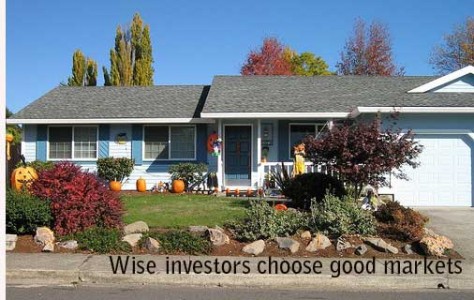 King Solomon’s reputation for wisdom has kept his fame alive for thousands of years. Among the many proverbs and parables credited to him are many sayings that have a direct application to the world of investing. In Proverbs 1:5, he praises those who are wise: “A wise man shall hear and shall be wiser; and he that understandeth shall possess governments.” Today’s wise investors may not be seeking to possess governments, but they do need to understand the nature of real estate markets in areas where they want to invest. Knowing the characteristics of a good rental market in areas around the country can help to reduce risks and increases returns.
King Solomon’s reputation for wisdom has kept his fame alive for thousands of years. Among the many proverbs and parables credited to him are many sayings that have a direct application to the world of investing. In Proverbs 1:5, he praises those who are wise: “A wise man shall hear and shall be wiser; and he that understandeth shall possess governments.” Today’s wise investors may not be seeking to possess governments, but they do need to understand the nature of real estate markets in areas where they want to invest. Knowing the characteristics of a good rental market in areas around the country can help to reduce risks and increases returns.
As Jason Hartman points out, all real estate is local. Any property exists in relation to the larger context of the neighborhood, the city, and the state where it’s located, and its viability as an income producing property depends on factors on all those levels. These factors determine issues including the pool of potential tenants, the maximum rent to charge, and even limitations on property maintenance and upgrades. So a good market will depend on the interplay among all those variables.
Generally speaking, though, desirable markets feature a diverse employment profile, with numerous companies and institutions providing jobs that keep tenants able to pay rents. If an area must depend on only one employer, when that employer leaves, the employees depart too, leaving behind vacant houses and empty schools. Employers and institutions that attract renters, as opposed to buyers, is also a plus – places such as colleges, businesses that hire younger professionals, and large technology firms.
Those renters – the long-term employed individuals who can’t, or don’t choose to buy homes – are likely to be able to consistently pay rent and keep the property reasonably well maintained. Renters of single family homes tend to be families, perhaps former homeowners themselves, and are looking for a long-term rental in areas with community ties to schools and other services. To attract those kinds of renters, choose properties near a school or other institutions offering services a family might need.
Another factor to consider is the overall economic profile of the city and even the state where the property is located. Ongoing development in key areas such as commerce and housing, suggest a belief in future growth. Likewise if the state where the property is located is suffering a downturn due to natural or economic factors, the likelihood of finding a relatively large pool of desirable tenants shrinks.
On the city and state levels, the laws and practices that govern use of land, the impact of planned improvements and allowable changes to the property can be a tip off to problems with the property in the future. The strictness of business zoning and limitations on alterations to the structures can severely limit options for upgrading or even maintaining the property.
Subject to the vagaries of local life, markets outside an investor’s general area can be worth investigating. With an eye toward the future and a clear look at present circumstances, each investor can decide if a particular market area is right for them. A wise man – or woman – understands that all real estate really is local.
The Solomon Success Team

